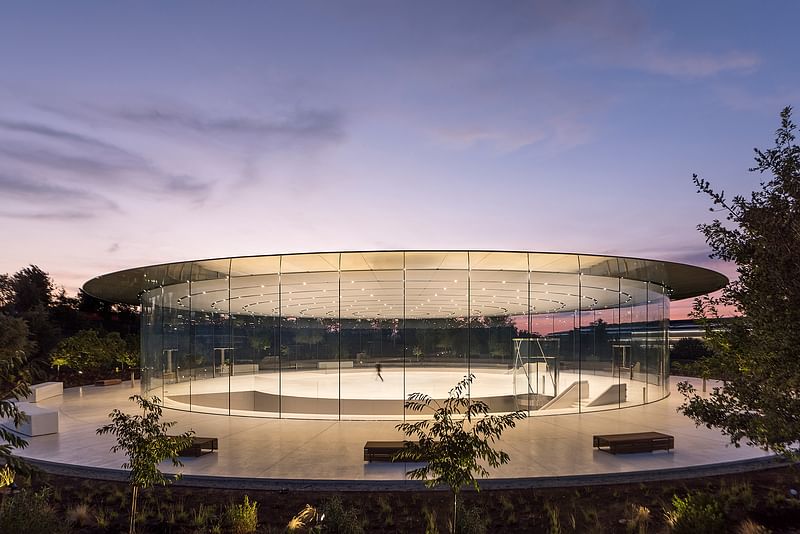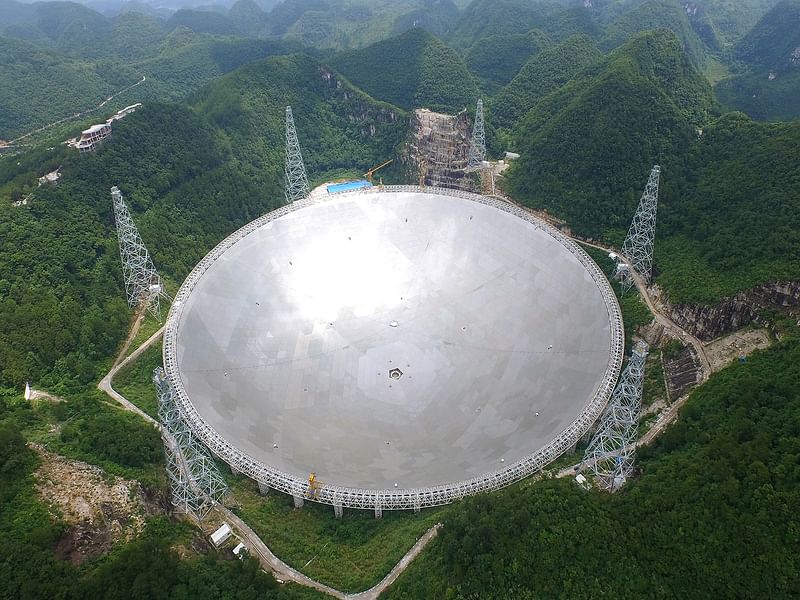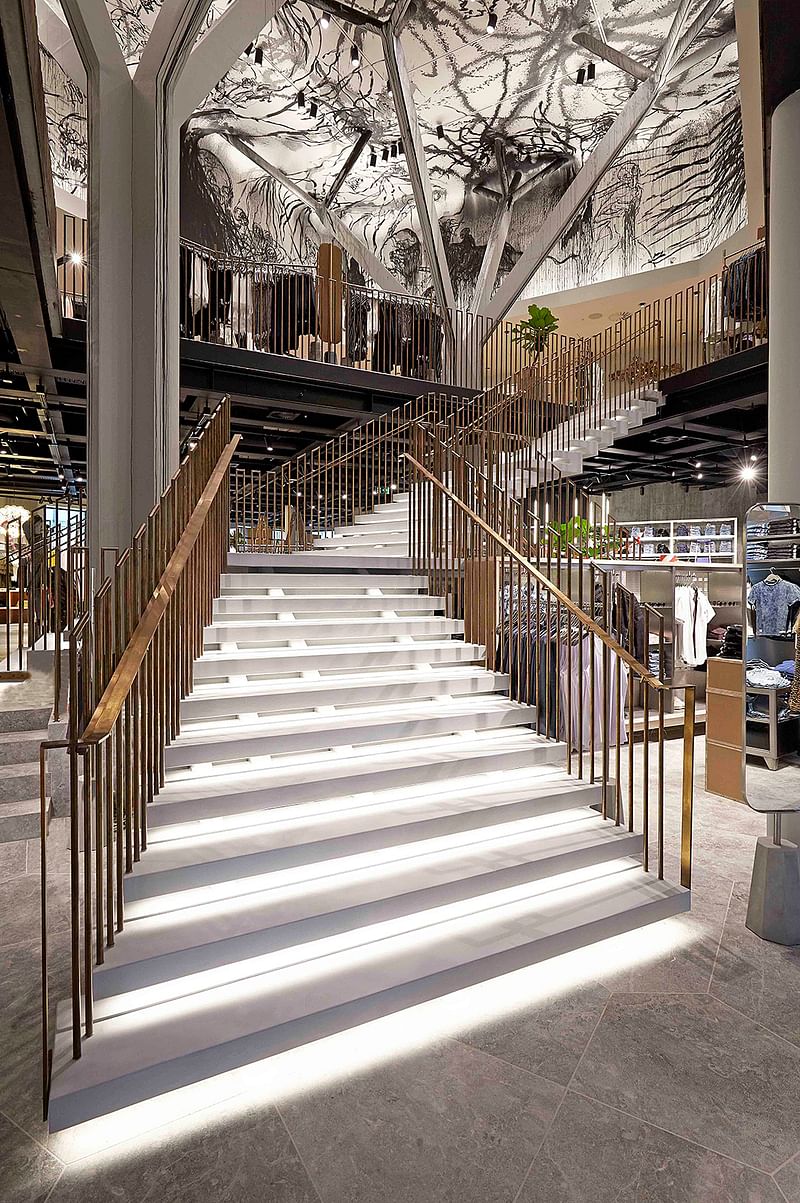
Results of the Structural Awards 2018 unveiled: Tamina Canyon Crossing wins Supreme Excellence title
By Alexander Walter|
Monday, Nov 26, 2018
Related
Recognizing the world's most cutting edge engineering achievements across 14 categories, the Structural Awards 2018 were recently presented in London to an eclectic mix of structures that successfully incorporate technical ingenuity with beautiful architectural design.
This year's Supreme Award for Structural Excellence went to a new vehicle bridge elegantly crossing the Tamina Canyon in the rugged terrain of the Swiss Alps. "Tamina Canyon Crossing’s Supreme Award win recognizes the very best in bridge design and engineering, setting an example of best practice to the global construction industry," remarked Jury Chair, Professor Tim Ibell, on the results. "In this, The Year of Engineering, The Structural Awards perfectly encapsulate the skill and creativity of structural engineers as problem-solving design professionals, making a positive impact to society on a global scale."
Here are all 14 winning projects of the 2018 award edition:
Supreme Award for Structural Excellence & the Award for Vehicle Bridges: Tamina Canyon Crossing in Bad Ragaz, Canton St. Gallen, Switzerland
Engineer: Leonhardt, Andrä und Partner
Architect: Volkhard Angelmaier

Project description: "The bridge crosses the Tamina canyon 200m above the gorge. The arch and the superstructure create a continuous prestressed girder mainly forming the structural system. The 417m long superstructure is connected monolithically to the arch by inclined columns; the total length of the structure is 473m with abutments included."
Judge's comment: "This is undoubtedly an outstanding engineering solution, and the judges were impressed by the elegance, clarity and economy of the design. The judges noted the efficiency of the structural system, as well as the beautiful way that the design integrates with its spectacular surroundings. This is a concrete arch design in the best traditions of Christian Menn and Robert Maillart, and the engineers have produced a world class and graceful design."
Award for Small Projects (of under £1 million): Rwanda Cricket Stadium, Kigali, Rwanda
Engineer & Architect: Light Earth Designs

Project description: "The stadium adapts ancient Mediterranean techniques of thin-tile vaulting using compressed soil-cement tiles and geogrid reinforcement for seismic stabilization. It is composed by three vaults, the largest spanning 16m with a rise of over 9m. The vaults follow the natural resolution of forces toward the ground, closely mimicking the parabolic geometry of a bouncing ball and evoking the cherished hilly topography of Rwanda. Employing air-dried, hand-pressed soil tiles, produced using local labour, this method of construction has proved to be innovative, cost effective and beautiful."
Judge's comment: "This building in Rwanda impressed the judges on several counts. The form
of the roof, three parabolic arches of decreasing scale, is
eye-catching and a witty play on the parabolic path of a bouncing ball.
The interesting layering of local materials to build up a strong shell
structure with local man-power is highly effective and appropriate to
the location.
Research proved the value of using cement-stabilised tiles made from
site-excavated soil combined with the use of geogrid to improve
ductility in possible dynamic loads in a seismic zone."
Award for Construction Integration: V&A Exhibition Road Quarter, London, UK
Engineer: Arup
Architect: AL_A

Project description: "A new 1100m2 column-free subterranean gallery for the Victoria and Albert Museum’s temporary exhibitions programme with a new entrance, courtyard, cafe and shop - all contained in a 15m deep basement. Constructed within a courtyard bounded on all sides by Grade I and Grade II* listed museum buildings. Sophisticated 3D analysis, digital design and optimisation methods together with early considerations of buildability and construction sequence were crucial to developing the most efficient and appropriate design and reducing the risks during construction."
Judge's comment: "This creation of substantial new exhibition spaces and associated programme is a structural and architectural masterpiece. Constructed mostly below ground, adjacent to, and under fragile Grade I and II* listed buildings, construction methodology played an essential role in ensuring the viability of the architectural scheme and maintaining the integrity of the existing buildings. Structure and architecture are so interlinked as to be indissociable, displaying the evident synergy between the two. The entrance to the new gallery plunges visitors down and under an existing listed building facade through expressed steel framing that is brightly painted to highlight its use and celebrate the role of the engineer in realising this bold vision."
Award for Structural Artistry: Steve Jobs Theatre Pavilion, Cupertino, California, USA
Engineer: Eckersley O'Callaghan & Arup
Architect: Foster + Partners

Project description: "This pavilion is the largest structure in the world solely supported by glass. It features a 47m carbon fibre roof, the largest of its kind, comprised of 44 radial panels, which were assembled on site before being raised into position in one lift. This 80 tonne roof is supported by a 7m high glass cylinder, made up of glass panels, each consisting of four layers of 12mm thick plies, which hold up the roof without any additional support."
Judge's comment: "The Steve Jobs Theater Pavilion represents a culmination of the advances in structural glass technology born from the close relationship between Apple and EOC. The 47m carbon fibre roof is the largest of its kind, comprised of 44 radial panels, which were assembled on site before being raised into position in one lift. This 80 tonne roof is supported by a 7m high glass cylinder, made up of glass panels, each consisting of four layers of 12mm thick plies, which hold up the roof without any additional support. It is the largest structure in the world solely supported by glass."
Award for Long Span Structures: The Dubai Frame, Dubai, United Arab Emirates
Engineer: Arcadis Consulting Middle East Limited
Design Competition Winner: Fernando Donis (previously on Bustler)

Project description: "The Dubai Frame is a 150m high, 93m wide structure built to resemble a huge picture frame. The structure consists of two rhomboidal towers, connected by a sky bridge at the top, offering visitors a 360-degree view of the city. The bridge weighs approximately 800 tonnes and was built on the roof of the bottom part of the Dubai Frame and then strand-jacked into position."
Judge's comment: "A unique project and an unusual and ambitious application of a conventional structural form. The picture frame arrangement, very common as a structural stability system, has been realised on a massive scale, standing 150 metres tall with a connecting bridge between the two towers spanning 75 metres. The deliberately slender design of the towers adds to the drama of this tourist attraction whilst also reducing the volume of materials used and maximising efficiency of the structure. The construction considerations for lifting the connecting bridge at height added complexity for the engineers."
Award for Structures in Extreme Conditions: The Stability Frame, Hywind Scotland, Aberdeenshire, UK
Engineer: Saipem Limited

Project description: "The world’s first installation of a fully assembled Wind Turbine Generator (WTG) onto a floating substructure. Using the Saipem Stability Frame and Semi‐Submersible Crane Vessel Saipem 7000 to install five WTGs, Statoil’s Hywind Scotland Project is the world’s first floating wind farm. The Stability Frame used 25% of the material of a traditional frame and was far more efficient in terms of execution schedule. This delivered a cost saving to the project of 1.7m euros. The assembly was carried out in Stord, Norway, then the fully assembled turbines were towed to Scotland."
Judge's comment: "Hywind Scotland was realised through the invention of a novel Stability Frame, allowing each fully pre-assembled wind turbine – almost 100m tall and with a blade diameter of 154m – to be lifted from their Norwegian assembly area and mated with its 10,500 tonne submerged floating base, before being towed 450km across the North Sea to the site of the new Buchan Deep wind farm. The 30 tonne fabricated steel structure included a friction collar controlled with hydraulic actuators to allow lifting, transport and installation of the 1,140 tonne wind turbine generator, safely addressing the inherently unstable temporary condition and the extreme roll, pitch and yaw motions caused by wind and wave motions in transit. The frame is reusable and allows for rapid and repeatable operations. The solution was the product of truly innovative ‘first-principles’ engineering, which was carefully developed and rigorously tested and led to the realisation of an ambitious first for UK engineering."
Award for Long Span Structures: Reflector Supporting Structural System of the Five-hundred-meter Aperture Spherical Telescope (FAST), Pingtang County, China
Engineer: Beijing Institute of Architectural Design

Project description: "The world’s largest single-aperture telescope. The active reflector system of FAST is a 500m aperture and 300m radius spherical crown composed of its primary supporting structure, actuator, backing structure and reflector panels. FAST was assembled in a mountainous region with complicated terrain and is also the largest space structure ever to have been built."
Judge's comment: "FAST is a spectacularly large piece of engineering that allows a 300m parabolic aperture to track within a 500m spherical cable net. While essentially a cable net structure suspended from a steel truss ring beam, the scale of the structure, the movement precision (to within 1mm over 500m) required, the remote location, and the degree of analysis required make this a hugely ambitious and bold project and a first of its kind at this scale, which deserves enormous respect. The list of technical considerations that become apparent on close inspection of this project demonstrate the engineers have been meticulous in their approach and often working from first principles to produce this highly challenging and impressive structure."
Award for Sustainability: Haiti Chapel, Northern Haiti, Haiti
Engineer: Webb Yates Engineers
Architect: Guylee Simmonds

Project description: "This new chapel was required to provide a large new space for services, meetings, counselling and consulting. The design of the chapel responded to the challenges of both seismic activity and hurricanes, combined with a lack of good quality building materials and experienced labour."
Judge's comment: "Conceived to be built using locally available trades and materials, the chapel fulfils a useful function in an area that has suffered significant natural disasters. It provides a new large space for services, meetings and staff training, as well as several connecting offices for counselling and consulting. The chapel has been designed to resist seismic action and hurricane wind loads and is an excellent example of a structural design delivering tangible improvements to peoples' lives."
Award for Structural Transformation: Rømerhus, Aarhus, Denmark
Engineer: Søren Jensen Rådgivende Ingeniørfirma A/S
Architect: E + N Arkitektur

Project description: "The restoration of a seven-storey commercial building’s 1895 facade and the substantial rebuild of the main building. The buildings original inner courtyard has been converted to a five-story high atrium, and the static loads from the floors higher than the atrium are transferred through a suspension system to two mega columns. On the ground and first floors, the original floor slabs have been replaced by in-situ cast concrete floors, which has made it possible to establish open, pillar-free sales areas. The many constructive interventions increased the overall load of the building, which has made it necessary to strengthen the existing foundations with a number of additional 25m long GEWI piles. The building was in operation throughout the entire construction process."
Judge's comment: "This stylish transformation of a historic town centre building has benefitted immensely from the intelligent design and construction methodology of the structural consultants. Elegant tree columns on new foundations inserted within the original courtyard have been used to support the upper floors, allowing a top-down construction programme that has enabled continuous building occupancy throughout the construction period. By transferring loads from upper floors and replacing lower floors with concrete structures capable of spanning greater distances, the engineers have enabled much of the loadbearing structure to be removed in the retail areas. The resultant conversion of a 19th century building into vibrant and unencumbered retail and office space, where the artistry and intelligence of the structural solutions are fully expressed, is a tribute to the skill of the structural engineers and their close collaboration with the architect."
Other awards presented that night were:
- Award for Construction Innovation: Innovative Touring Frame - U2 ‘The Joshua Tree’ Tour 2017, Worldwide (Engineer: Atelier One)
- Award for Pedestrian Bridges: Perry Bridge, Horotiu, New Zealand (Engineer: Holmes Consulting)
- Award for Small Projects (of between £1-3 million): Herne Hill Velodrome, London, UK (Engineer: Heyne Tillett Steel)
- Award for Structural Heritage: The Hoover Building, London, UK (Engineer: Interrobang)
- Award for Outstanding Value: New StructureCraft Plant, Abbotsford, Canada (Engineer: StructureCraft Builders Inc.)

RELATED NEWS The best structural innovations of the year unveiled as 2018 Structural Awards shortlist is announced

RELATED NEWS 2017 Structural Award winners announced


Share
0 Comments
Comment as :